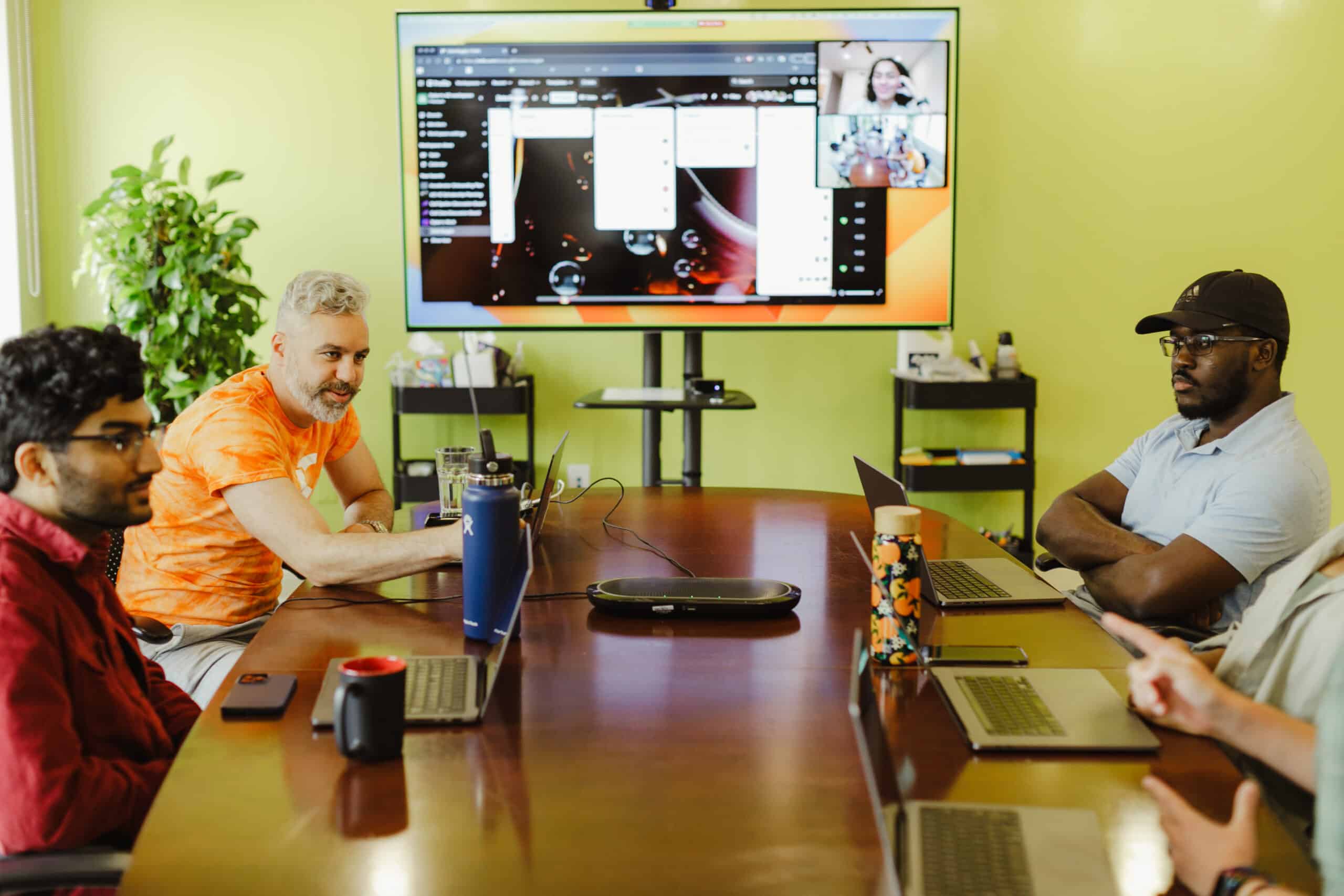Returning to the office is great, and you should do it… just not 100% of the time
Where I’m Coming From
I’ve been working in tech as a product manager since 2016, and more than half of those years (from early 2020 to the fall of 2024) have been remote. Starting with the pandemic, I didn’t meet another person I worked with in person until the spring of 2023. During those interactions, I realized how much value I gained from face-to-face conversations with coworkers and clients. That insight played a big role in my decision to join Atomic in September of ’24.
Now, after almost five years of working remotely, I have some observations about returning to the office. Some of them are cool. Some of them… are not.
Observation 1: Energy
Coming back to the office felt like the first day of school — I was excited to work somewhere other than my kitchen table or the desk upstairs, meet new people, and take on new projects. That excitement hasn’t entirely gone away, but it’s mellowed into something more sustainable: the steady, upbeat, and connected energy of Atomic’s Ann Arbor office.
A big part of this energy comes from movement during the day. Something as simple as walking to a meeting room instead of taking a Zoom call from my desk breaks up the monotony I often felt when working remotely. Standing up to write on a whiteboard instead of opening a new tab in Miro literally requires me to stand up and move. Even small actions, like walking downstairs to grab another cup of coffee, often lead to spontaneous conversations with coworkers.
Those micro-interactions—stopping to chat in the kitchen, taking a quick walk for coffee, or eating lunch with others—are impossible to replicate when working from home. These moments, while small, feel meaningful to me. They’re the other half of the energy I’ve been experiencing.
I think this “energy” is rooted in a shift in focus.
Observation 2: Focus
My focus has shifted from Work + Home to Work + Relationships. No job demands 40 straight hours of pure productivity — it’s natural to have an ebb and flow, including small pauses to recharge between bouts of productivity. What fills those “in-between” moments is what’s changed the most for me since returning to the office.
When I worked from home, my energy was divided between two buckets: Work and Home. Work was all the deliverables, responsibilities, Zoom calls, and tasks that came with my role. Home was everything else — walking the dogs, going to the gym, cleaning the house. I had a routine where I could seamlessly switch between the two: run a workshop, unload the dishwasher, take a client call, and fold laundry. After five years, I’d gotten good at balancing those buckets.
In the office, however, the Home bucket is replaced by Relationships. I still do all the same work-related tasks, but now, after a workshop, people stick around to chat. Instead of eating lunch alone at my desk, I join coworkers in the kitchen. The bucket that was filled with laundry was now filled with human connection.
I loved it. And it also sucked.
Observation 3: Burnout
For the first month and a half at Atomic, I was in the office close to 100%. Unsurprisingly, this swung the focus pendulum way too far in the other direction. I had less time for dog walks, gym sessions, hobbies, and cleaning the house. The Home bucket didn’t disappear — it just piled up, ignored, until I got home each day and faced a new to-do list of chores that used to get done organically.
Leisure time vanished. And no, folding laundry is not my idea of leisure time. Without time to recharge, I felt my baseline stress steadily increase. Within six weeks, I hit burnout: work didn’t matter, connections didn’t matter, and I certainly didn’t need to go to the gym.
“Why don’t you work from home more?” Jenn, the design lead on my team, asked me one day. I was flabbergasted — wasn’t the point of being in the office to be there all the time? 100%. Full stop.
That conversation was a turning point. Jenn helped me realize that flexibility is the key to balancing these buckets. At Atomic, our goal is for teams to be in the office about 60% of the time. My team self-organizes around at least two in-office days a week, but there’s flexibility built in for everyone to find what works best.
For me, that means being in the office three or four days a week. Three is my baseline; fewer than that, and I start missing out on the energy and focus I mentioned earlier. Occasionally, I’ll add an extra day if I need more face-to-face time with teammates or fewer distractions at home. Over the past five weeks, this rhythm has allowed me to balance all three buckets: Work, Relationships, and Home.
In-Person Work Is Great — Just Not 100% of the Time
I used to think returning to the office would be a magic wand for productivity and human connection. And while in-person work has immense benefits — quick chats instead of formal meetings, moving around instead of sitting all day — it’s not a one-size-fits-all solution.
The real magic is in flowing between all three buckets depending on the day. Striving for 100% in-office attendance all the time is an oversimplified view of how humans relate to work, each other, and their personal lives.
At least, that’s my takeaway after three months of big change. But I’m curious: what’s been your experience with returning to the office?

